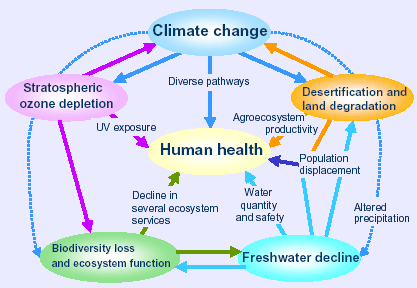Resource Lesson 1: Social Determinants of Health
There is a large amount of information that demonstrates that social and cultural factors have a major impact on the cause of illness, the ability to receive appropriate treatment and prevention. Here are a few key resources to whet your appetite for further study.
Inequality and inequity.
The World Health Organisation has defined some key concepts in What are health inequities or inequalities? "Health inequities are avoidable inequalities in health between groups of people within countries and between countries. These inequities arise from inequalities within and between societies. Social and economic conditions and their effects on people’s lives determine their risk of illness and the actions taken to prevent them becoming ill or treat illness when it occurs. " In other words, inequity refers to unfair, avoidable differences arising from poor governance, corruption or cultural exclusion while inequality simply refers to the uneven distribution of health or health resources as a result of genetic or other factors or the lack of resources.
A global perspective. Here is a quote from a paper in African Health Sciences: Are there particular social determinants of health for the world's poorest countries?. "It is clear that health inequalities caused by poverty significantly differ from those caused by living in materially well-off but unequal societies. As such, solutions for improving health status and minimizing health disparity cannot be universally applied to all countries. As the causes of health inequality vary internationally, so do the solutions to the problems. Given the large proportion of the African population living below the international poverty line, and in view of the fact that the majority of the African population does not have the means to afford basic human needs, poverty may be the single dominating factor that is responsible for poor health in Africa. Therefore, tackling poverty constitutes the greatest priority policy option in Africa."
Some theory. Thus, the social and cultural determinants of health lead to health inequalities, both between and within countries and communities. The theoretical background to this area include the work of Margaret Whitehead and colleagues, and this picture, an adaptation of the model developed by Dahlgren and Whitehead (1991), also called the 'policy rainbow', describes the layers of influence on an individual's potential for health, is often quoted.
From Jinks et al. licensed under CC BY 2.0
Where does economics fit in to this?
Here is a presentation, by one of the Peoples-uni tutors, an economist: Socioeconomic determinants of health. It is quite comprehensive and easy to read.
What can we do to improve health in the face of this?
Margaret Whitehead, again, proposed four categories of interventions that differ according to the nature of the entity being influenced in A typology of actions to tackle social inequalities in health:
1. Strengthening individuals. This category assumes that the cause of the problem is a personal deficit of individuals. People might lack knowledge or skills, have inadequate beliefs or experience low self-esteem or a feeling of powerlessness and the intervention will thus try to correct the deficit by improving education, support or counseling. Strengthening individuals is rooted in public education campaigns, support groups and counseling programmes.
2. Strengthening communities. In this case, the underlying cause of health inequalities is related to societal constructs such as social exclusion, isolation and power inequality in disadvantaged communities. Interventions in this category can be of two types: horizontal and vertical. Horizontal interventions aim at enhancing social interactions between community members and allow community dynamics to take place. On the other hand, vertical interventions try to create interactions between different social groups and support participation in the political and economic system.
3. Improving living and working conditions. The focus of this category is the environment and understands the cause of the problem as the exposure to a health-damaging environment. Exposure is not only understood as physical hazards, but also as the lack of access to essential public health goods, such as education, health services and food supplies. Moreover, it includes the exposure to mental hazards both at home and at work.
4. Promoting healthy macro-policies. This category locates the problem in the society and postulates that societal factors -macroeconomic, cultural, labour market, income distribution, etc. - are the cause of health inequalities. The interventions, hence, aim at influencing the macroeconomic and cultural environment to reduce poverty and alleviate the wider effects of inequality on society.
Health Equity Monitor. You might want to look at this, from the WHO Global Health Observatory, which shows some selected data on health inequity globally.
The ecosystem. Lets not forget that the broader global ecosystem has a major influence on health
(from the WHO Ecosystem goods and services for health)

